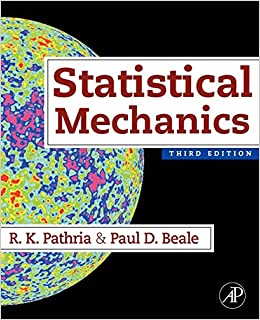For a Fermi gas confined to a two-dimensional region of area A , N = A
Question:
For a Fermi gas confined to a two-dimensional region of area A,
N=Aλ2f1(zF)=Aλ2ln(1+zF),EF=AkTλ2f2(zF)
while the corresponding results for the Bose gas are
N=Aλ2g1(zB)=Aλ2ln(1−zB),EB=AkTλ2g2(zB)
Equating (la) and (2a), we get
1+zF=11−zB, i.e. zF=zB1−zB or zB=zF1+zF
Letting T→0, we recognize that the constant appearing in the above result must be equal to EF(N,0). To verify this, we note that, since the Fermi momentum of the gas in two dimensions is given by the equation N=A⋅πp2F/h2, the Fermi energy is given by εF=p2F/2m=Nh2/2πmA. The ground-state energy of the gas then follows readily:
EF(N,0)=∫pF0p22mA⋅2πpdph2=A⋅πp4F4mh2=N2h24πmA=12NεF.
Next, since z∂f2(z)/∂z=f1(z),
f2(zF)=∫zF01zln(1+z)dz=∫zF0{11+z+1z(1+z)}ln(1+z)dz.
The first part of this integral is readily evaluated; in the second part, we substitute z=z′/(1−z′), to get
f2(zF)=12ln2(1+zF)−∫zF/(1+zF)01z′ln(1−z′)dz′=12ln2(1+zF)+g2(zB).
Equations (1b) and (2b) then yield the desired result, viz.
EF(N,T)=N2h24πmA+EB(N,T), whence {CV(N,T)}F={CV(N,T)}B.
Step by Step Answer:






